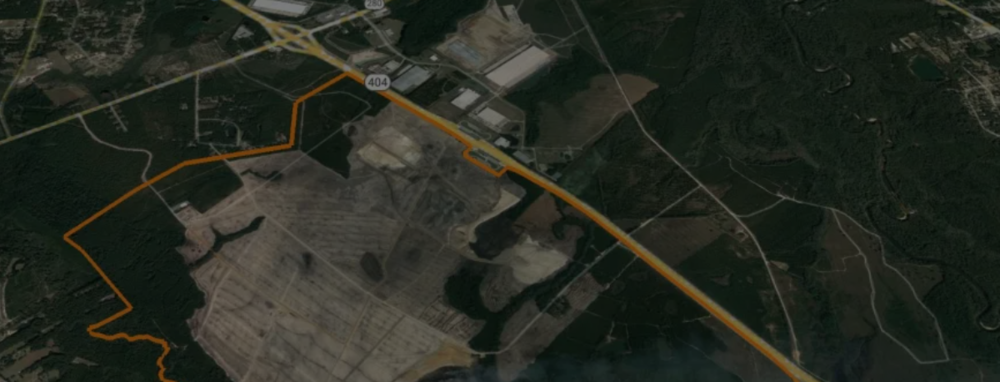
Section Branding
Header Content
5 things: Hyundai development
Primary Content

Maggie Lee, The Current
The Hyundai metaplant is rising in Bryan County. The official announcements came with lots of commas: 8,100 jobs, at least $5.5 billion in construction spending, suppliers that plan to hire thousands more employees.
And there are also commas in the price tag for taxpayers.
The Current has tunneled into the minutiae of the contracts and promises.
Here are five takeaways:
Who: 8,100 workers — eventually
Hyundai Motor Group says its arrival will mean 8,100 new jobs at its site at Interstate 16 and Georgia 280 in Bryan County by the time the electric vehicle and battery plant are fully running.
That much staff would put the metaplant site among the biggest employers in the region. According to the Georgia Department of Labor’s 2022 data, only 11 private companies employ more than 1,000 people in Chatham, Bryan and Effingham counties.
The largest of these is Gulfstream, with roughly 11,500 workers around Savannah — and it’s looking for more.
The Savannah-Chatham Public School System, meanwhile, has about 5,500 staff.
Some 3,500 civilians work at Fort Stewart, while 640 civilians are employed at Hunter Army Air Field.
Approximately 27,000 people work in in bars, restaurants, hotels, RV parks and the rest of the hospitality industry in Chatham, Bryan and Effingham, but those folks are spread among some 1,600 relatively small businesses.
What: the pay
Hyundai and the next-door battery plant will pay at least $58,105 on average, plus benefits, for each job. That’s in order to qualify for all the promised state and local grants, tax breaks and land, public funds worth about $228,000 per job.
If you want to dive into the details: read more here.
Hyundai suppliers, meanwhile, can cut separate pay, investment and subsidy deals.
For example, Ecoplastic’s plant near Register needs to provide 456 jobs in eight years when it’s fully functional making plastic parts for cars. Those workers need to be paid at least the county’s average wage, which at the time of the February 2023 agreement between Bulloch County and Ecoplastic, was $21.65 an hour. If the job is 40 hours per week, that would come to about $43,300 per year.
In return, for building in the county, Bulloch gave Ecoplastic a $2.3 million discount on the purchase price of its site and a discount on county property taxes for 15 years. (The discount doesn’t apply to school and fire district taxes.) The company may also receive a $1.6 million state grant.
Joon Georgia, meanwhile, has a similar contract with Bulloch County and the state — an hourly rate that matches the county average for the 630 jobs it has promised to create in its new facility. In return, the company got a $3.1 million discount on land near I-16, a $2.7 million state grant and a 10-year county property tax break. (School and fire rates aren’t abated.)
Where: Coastal Georgia
The Hyundai Metaplant sits on more than a mile of Black Creek, about three miles before that tributary joins up with the Ogeechee River.
Hyundai and its suppliers are setting up near interstates — and the waterways of the Ogeechee watershed. A new wastewater treatment plant for the site and surrounding areas will discharge into the Ogeechee River.
The wastewater treatment plant going up across the interstate from Hyundai will take the plant’s wastewater and north Bryan’s sewage, treat it, and pour it into the Ogeechee. Environmentalists at the Ogeechee Riverkeeper have already started tracking water quality in both the creek and the river, as they don’t trust the state to monitor any pollution very closely.
Further afield, eight Hyundai suppliers will be spread out around Bryan, Bulloch, Chatham, Effingham and Liberty counties.
For now, it will take a car to get to these factories — none are on public transport lines.
When: It’s started
Hyundai production is set to start in the first half of 2025. The Metaplant site, outlined in orange, sits on the south side of I-16, about 22 miles northwest of Savannah. Site clearance is already visible from satellite photos. The same photos show the build-out of industrial sites in the area since 2005. Daniel Defense and ORAFOL are just across the interstate.
How: Collaborative counties, state aid
State and local governments see the influx of jobs as a windfall, as monumental as winning the College Football National Championship. In Georgia, the team that wooed these companies was made up of state and county leaders as well as a relatively new government entity, the Savannah Harbor-Interstate 16 Corridor Joint Development Authority.
They competed against regional states, and an expectation by manufacturers that they would be offered billions of dollars in subsidies.
In its offer letter to Hyundai, Georgia’s Department of Economic Development led with the honorific given to Georgia by a niche business publication: Best State for Business, which cites the area’s “outstanding logistics, well-trained and educated workforce, low business costs, pro-business climate and high quality of life.”
Quality of life for workers is notably missing from those rankings.
One thing Coastal Georgia laborers can expect to benefit from quickly, however, is the tens of millions of dollars that the state is investing in job-training specific to the needs of the new employers.
This story comes to GPB through a reporting partnership with The Current.

